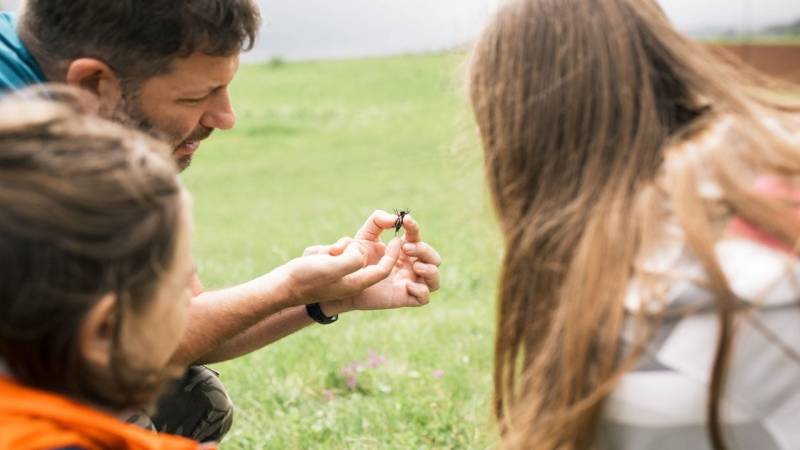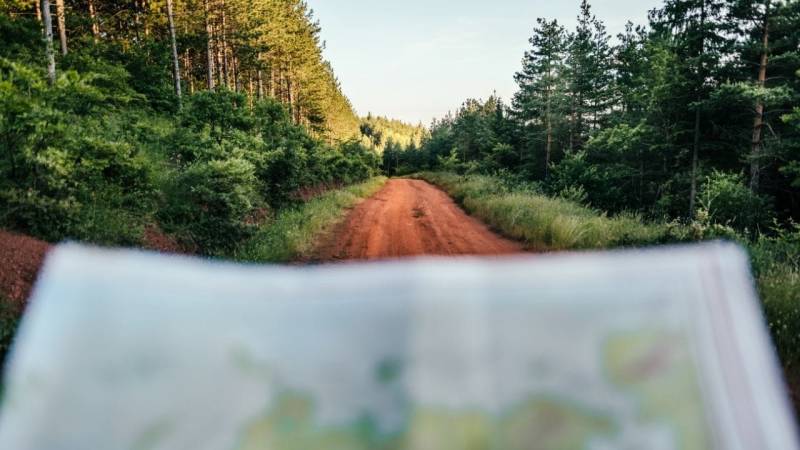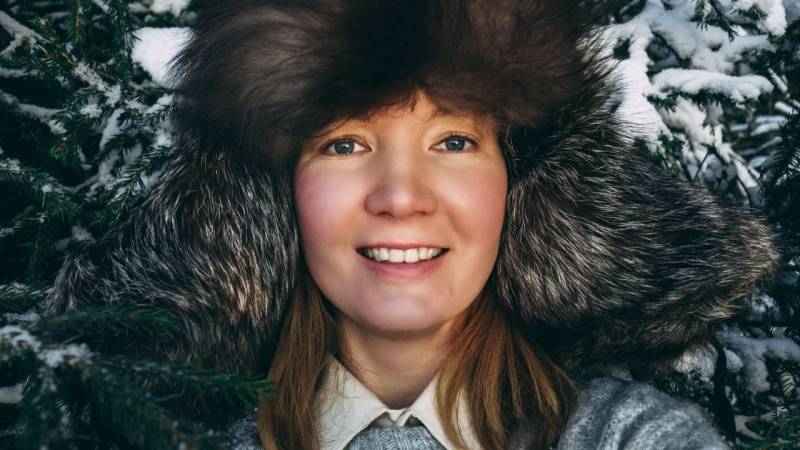
How you inspire people through Coyote Teaching?
👉 The key facts from this guide
- Coyote Teaching is an ancient, multidimensional teaching method based on curiosity and enthusiasm.
- The method uses natural mentors and a sophisticated questioning technique that is individually tailored to the person.
- There are three levels of questions: trust-building, boundary-pushing, and beyond-the-boundary questions.
- Coyote Teaching means learning on an equal footing and holding space for curiosity and enthusiasm.
- The method requires empathy, tact, and creativity to maintain the other person's enthusiasm.
- To awaken the coyote in you, practice asking questions about natural objects and observe how your perception changes.
How about finding a way to truly inspire other people?
You would not only awaken their boundless curiosity, but also impart them with a wealth of knowledge.
You would learn with fun and joy, and it would happen in a mysterious, almost magical way - completely invisible.
There is a way to achieve exactly this, in dealing with other people of all ages.
Today I'm going to tell you about it, it's called Coyote Teaching.
What is Coyote Teaching?
The learning method of Coyote Teaching has been successfully practiced by indigenous peoples for thousands of years and is based on curiosity and enthusiasm. This is achieved through a sophisticated questioning technique that is individually tailored to the person. Natural mentors, such as necessities that arise or are created by themselves, and the joy of discovery are used.
The Coyote Teaching is a very ancient multidimensional teaching method and therefore matured over many generations. For hundreds of years, it has been successfully applied and passed down by Native American cultures of North America.
A simple example:
If I want to cook outdoors (necessity), I not only have to collect firewood. I have to know how to find suitable tinder material and how to not only ignite the fire but also build it up.
Curiosity and necessities thus provide a foundation to align oneself with - our ancestors learned, and the indigenous people learn this way.

It is important to not always have an answer ready for people's questions. Instead, you guide them through targeted questions and stories to self-efficacy so that they can find the answers themselves.
You are the mentor who holds space for curiosity and enthusiasm. See yourself as the guardian of the ember, so that the inner fire can ignite.
Jon Young says about Coyote Mentoring:
"In the best case, it helps individuals to recognize their full potential and therefore serve their community. It consists of a set of powerful tools that can gradually bring out what nature has provided and preserved from individuals. Mentoring gently pushes people to the limits of their knowledge and experiences and guides them into new territory."

Does everything need a name?
Being able to name animals and plants is good, but there is so much more to discover.
I still don't know the names of some species today or can't remember them because the name is not the highest priority.
I still recognize them when I find them in the forest.
Furthermore, I didn't know the name of a certain bird for a long time. But I knew that the little bird with the black head reminded me of a coal tit.
The underside of the plumage here, however, is more beige than yellow. He loves coniferous forests, especially spruces, and his song reminds me as delicately as it sounds, somehow of an air pump. In addition, he loves to use the fur remnants of other animals for his nest building.

I discovered this when I was brushing my dog in the forest. I only learned the name at the very end.
All these things I might not have discovered if someone had immediately answered my question about which bird it is with the name.
The puzzle would have been completed, the tension would have dissipated. In fact, it's a bit like a treasure hunt, when you find an answer to one question, but it also raises the next questions.
All knowledge and all expansion of our knowledge does not end with a period, but with question marks. An increase in knowledge means an increase in questions, and each of them is always replaced by new questions. - Hermann Hesse
The three levels of questions
The Coyote Teaching succeeds with a sophisticated questioning technique that is adapted to the individual's level of knowledge.
1st Level: Trust-building Questions
Especially with beginners, you should stay at this level.
This is about moving your questioning technique both within your comfort zone and within the comfort zone of your counterpart.
Your protégé should be able to answer the questions confidently. This builds trust and sparks a desire to explore further.
Through the feeling of success, relaxation sets in and at the same time courage and pride. The entire posture changes and that is a good thing.
Please never start with too difficult questions that only make the other person feel small. You will probably spend up to 70% of the time with your mentees (a mentee is someone who is mentored by a mentor), with questions from this level.
Imagine you find a few eggshells on the ground.
The questions from level are then, for example:
- How do the shells feel?
- What color are they, and how do they smell?
- What does the inside look like?
- How big was the egg as a whole?
- Do you have any idea what could have happened here?

Level 2: Borderline Questions
If you notice that your mentee is strong enough, start with questions that are at the edge of his knowledge.
Which ones that push him to his limits and make him think. But this is not about "queries" like in school, but about discovering and exploring together.
The main intention is always to arouse curiosity and keep it as long as possible.

Actually, it's about expanding the perspective. This is so much more than just imparting knowledge because conscious sensory perceptions and experiences are just as important.
For example, if you notice that one of your proteges often has their gaze on the ground to search for tracks, but rarely lifts their nose and gaze to the sky and treetops, you ask questions to gently expand this boundary.
To tug at this invisible border, you can also tell a story or reveal other information that entices further discoveries and experiences.
Coyote Teaching is much more than just asking questions.
Your own authentic curiosity is essential for that.
Therefore, you must constantly sharpen your perspective on things as if you were looking at them for the very first time.
In this regard, you will rediscover and keep alive your childlike enthusiasm. This way, you will always remain a collaborative research team on equal footing with your mentees.

Level 3: Questions that go beyond borders
Such questions will make up the smallest part of your work.
You can appear intimidating and should only be asked when the time is right and a lot of relationship and trust building has been done.
With this type of question, you make someone think about things they never would have thought they could know.
Maybe you don't know the answers to these questions yourself. They lead him to look for things that are not obvious.
Sporadically, we never find the answers to these questions, and that's perfectly okay. It's less about the answers and more about the feeling of being on the trail of a mystery.
A feeling of vibrant curiosity and an ongoing adventure journey.
What does the coyote have to do with it as an animal?
The coyote is the trickster in Native American mythology. In many legends, these animals have a close connection to the creative power.
He is a stealthy hunter who often goes unnoticed as he approaches his prey. He is extremely clever but doesn't take himself too seriously and enjoys mischief.

One could compare the stories about the coyote with those of the fox or the raven here in Central Europe.
In all stories around the world, there is an animal that takes on the role of the trickster. With its unconventional methods, which may even seem ridiculous at first glance, it sets things right again.
The clever trickster is something we have already experienced in our history in human form. Think of Gandhi, who wanted to overthrow British oppression by marching to the sea to obtain salt.
Or, quite modern, we can also think of Bill Gates. His idea of equipping every household with a computer was ridiculed. And which household is still without a computer today?
All the people who go new ways seem a bit crazy at first glance.
But it is precisely they who, with their cunning ways, manage to implement extraordinary things in a good manner. Thus, even the seemingly impossible becomes possible and accepted as the norm.
Doesn't that encourage you to do things in an unconventional way?
What Coyote Teaching is not
What I notice in my work and also in the social media area is that there seems to be misunderstandings about what Coyote Teaching is actually about.
It's not like you memorize and recite a questioning technique.
It's also not the case that Coyote Teaching means always asking a counter-question just to avoid giving answers.

The three levels of questions are a guide and a tool. They give shape to the whole.
However, this is a complex teaching method that requires one thing above all: Your intuition and empathy.
What do you think happens when you always respond to a person's question with another question? Without considering the type of question they asked, their level of knowledge, and their state of mind. This person, whether a child or an adult, will soon be discouraged from exploring further with you. In the case of adults, a sense of power imbalance also arises. Your encounter is no longer on equal footing.
So, the opposite of what we want to achieve through Coyote Teaching is happening.
Occasionally, someone really needs an answer and then we should also respond.
It takes your sensitivity and creativity to maintain the enthusiasm of others
Tell short stories and always stick to the abilities that the person on the other side currently possesses.
Feel into whether it currently needs an answer or assistance, which then leads to further questions.
We want to ignite a fire and must not extinguish the embers beforehand.

Neither with having an immediate answer to everything, nor with asking a clumsy counter-question without sensing it.
It is precisely the tricky way that is not immediately obvious.
Don't worry, it's a matter of habit. Over time, it will become easier for you to work and live creatively with Coyote Teaching.
Moreover, you have the coyote in you, it just needs to be awakened. Always remember that it is something completely natural and has been practiced for many hundreds of years.
Actually, we just need to remember this ancient treasure of knowledge.
A little exercise to find the coyote within you
Nature connection is reconnecting with your nature. We have lived outdoors in communities for much longer than we now live in houses.
So, it's like an internal software that you can reconnect to.
A profound knowledge, anchored at the cellular level, is waiting and ready to be rediscovered by you.
In order for you to awaken the coyote within you, I would like to give you a little exercise today that has helped me a lot. With its help, you will reignite the innocence of your childlike curiosity, and it will only cost you a few minutes of your time.
You can do it alone, but with a partner, it is much more effective.

Go outside and find something in nature that you want to pay attention to. A plant, an animal, a fruit, a leaf, or a stone, whatever catches your eye right now.
Now, for two minutes, continuously ask questions about the object.
Say your questions out loud, but don't give any answers.
Now you can observe how your mind constantly wants to present you with the unspoken answers. Just allow that and stick with the questions. Find ones that involve all your senses.
Your partner, if you have one, remains silent and listens attentively to explore with you everything you are currently discovering.
Don't stop asking questions until the two minutes are up. You may now realize that a certain excitement has spread.
Can you maybe even feel that your pulse has slightly increased?
Your brain has opened up within the two minutes to discover a new world. To take a different path than the usual one.
You feel vitality.

Repeat this exercise as often as you like and can.
Also feel free to combine them with your seating routine and see how it changes your perception and the way you see the world.
I wish you a lot of fun exploring and discovering many exciting questions.
Was this guide helpful?
26 people found this guide helpful.
5.00 out of 5 points (26 Ratings)
Comments (0)
This post may contain affiliate links. So if you click on the links and make a purchase, I will receive a small commission at no additional cost to you. Click here, to learn more about it.



